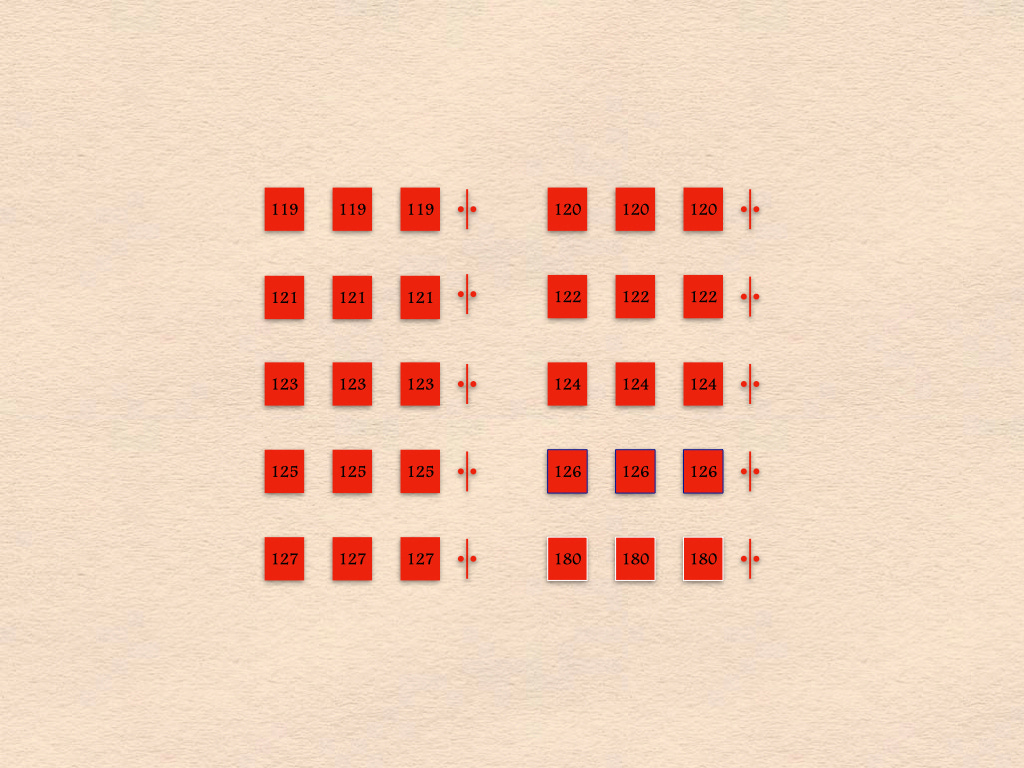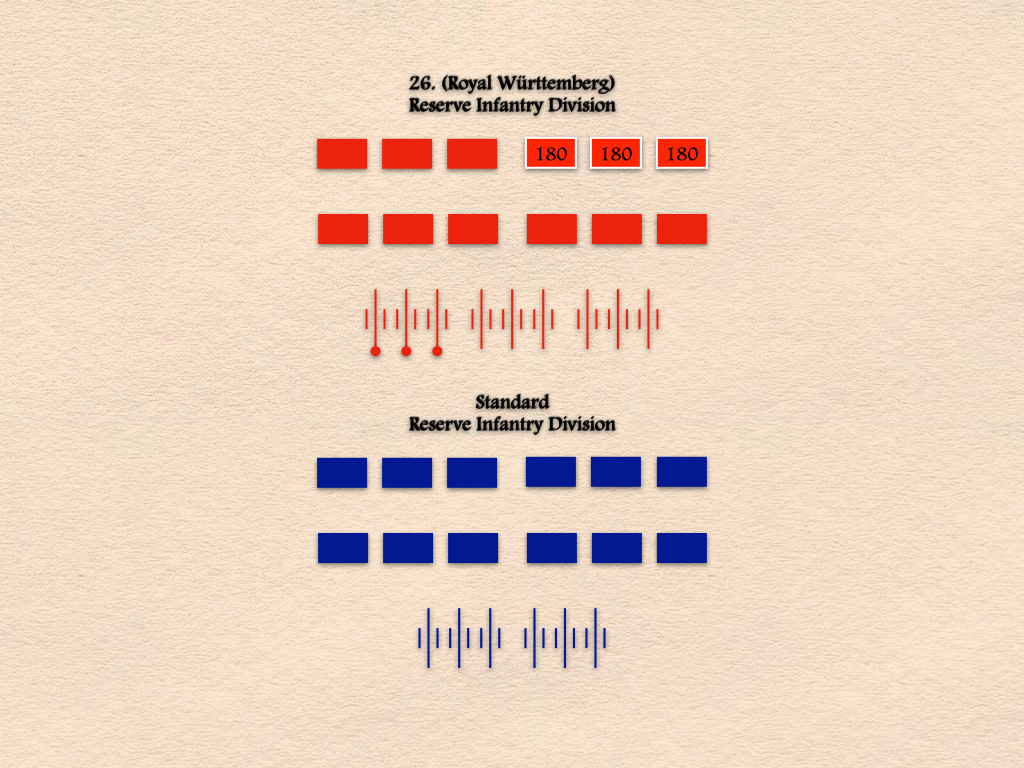While the smallest of all of the royal contingents of the military establishment of the German Empire, the peacetime army of the Kingdom of Württemberg proved too large to fit inside a single army corps. In particular, it possessed two peacetime infantry regiments that were surplus to the needs of a standard wartime formation of that sort.
In peacetime, the solution to this embarrassment of riches lent one of the extra infantry regiments [8. Königlich Württembergisches Infanterie Regiment Nr. 126] to the XV. Army Corps and employed the other [10. Königlich Württembergisches Infanterie Regiment Nr. 180] as the third infantry regiment of a peacetime infantry brigade.
At the start of the war, Infantry Regiment 126 remained with the XV. Army Corps while Infantry Regiment 180 joined the single Reserve infantry division fielded by the Kingdom of Württemberg. (The other three infantry regiments of this formation, the 26th Reserve Division, were Reserve infantry regiments.)
In the course of mobilization, the Grand Duchy of Baden raised Reserve and Landwehr infantry regiments in equal numbers. The kingdoms of Bavaria and Saxony fielded fewer Landwehr infantry regiments than Reserve infantry regiments. The Kingdom of Württemberg, however, produced twice as many Landwehr infantry regiments as Reserve infantry regiments.
This curious asymmetry may have resulted from a desire to enhance the capabilities of the 26th (Royal Württemberg) Reserve Infantry Division by providing its three Reserve infantry regiments with a higher proportion of younger reservists. (The other peculiarities of the 26th Reserve Division - its active infantry regiment and the third field artillery battalion of its field artillery regiment - also support this thesis.)
It is also worth noting that, if the authorities in Württemberg had replaced two Landwehr infantry regiments with two additional Reserve infantry regiments, the latter units would invariably have been assigned to a “foreign” Reserve infantry division. Moreover, as the standard ratio of Reserve field artillery units to Reserve infantry units was one battery for every two battalions, Württemberg might well have been asked to send the third field artillery battalion of the 26th Reserve Division along with the two additional Reserve infantry regiments.
As each of the ten peacetime infantry regiments of the Kingdom of Württemberg went to war, it left a training and replacement [Ersatz] battalions at its home station. Nine of these Ersatz battalions each contributed a pair of companies to the four brigade Ersatz battalions that the XIII Army Corps formed. (As Infantry Regiment 126 was stationed on the frontier with France, it was exempted from this requirement.)
These eighteen Ersatz companies were formed into four brigade Ersatz battalions. Of these, the 51st, 52nd, and 53rd Brigade Ersatz Battalions were, like most other units of their type, were four-company units. The 54th Brigade Ersatz Battalion, however, which had been assembled from elements provided by three peacetime regiments, consisted of six companies.
Sources: This post is based on data gleaned from the organizational appendix to the first volume of the German official history; Hermann Cron (C.F. Colton, translator) Imperial German Army: Organization, Structure, Orders-of-Battle (Solihull: Helion, 2002); Löbell's Jahresberichte über das Heer-und Kriegswesen [Löbell’s Military Matters and Warfare Annual], 1913, pages 12 and 13; Eike Mohr, Heeres- und Truppengeschichte des Deutschen Reiches und seiner Länder 1806 bis 1918 (Osnabrück: Biblioverlag, 1989) page 774; and Otto von Moser, Die Württemberger im Weltkrieg (Stuttgart: Belser, 1927) pages 116-117.








